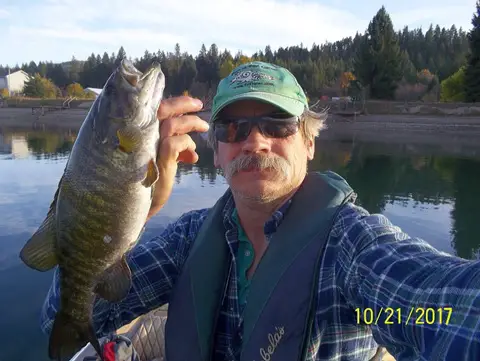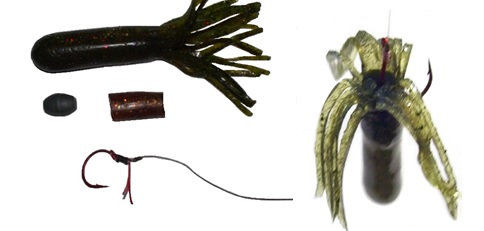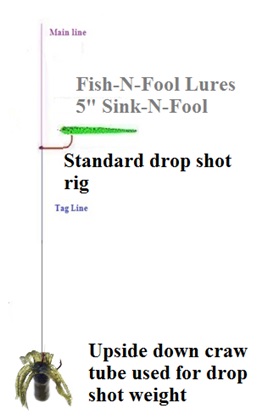Search
Latest Articles
A New Twist on an Old Tube
by Rick Lawrence, March 01, 2018
One such bait is the good old tube bait. There are most likely 100 ways to fish tube baits, but I came up with this little jewel about 3 years ago now, that has turned into one of my favorite ways to fish a tube. I call it the Upside-down Craw tube rig. It’s really a simple rig that uses tubes in a way that most fishermen would have never dreamed of.
I developed this rig while fishing for Smallmouth on the Pend Oreille River in N. Idaho. Other thing I know for sure is Smallmouth love crawdads, but when fishing tubes on jig heads they don’t really present the fish a realistic looking offering. A crayfish (or crawdad as we call them here in the Pacific N. W.) stands up with its pinchers held high above their head when any predatory fish are near. This got me thinking there has to be a better way to rig a tube that would more realistically imitates the actions of a real crawdad and thus the ”Upside Down Craw Tube” was born.
Here is a fat little Smallie that fell to the upside down tube.
All you need for this simple technique is some tube baits that somewhat match the crayfish in your area in both size and color, an egg sinker, and a piece of old round worm like a trick worm or any non-salt bait. If you’re using a 3’ to 3 ½” tube push a 3/8 oz. egg sinker up to the nose of the tube. If you want you can also add a rattle after the weight. I like to use an old earplug to fill the extra space and keep the tube from collapsing. Next take a worm that is about the right size to poke up into the end of the tube to seal it. Cut a plug about ¾” long and glue the plug in place in the open end of the tube with worm glue or super glue, being careful not to glue your fingers together. If you are using a smaller tube, go with a 1/4oz. weight, and if you are using a tube larger than 4” use a ½ oz. weight.
Now you take a finesse type hook like the Gammy 1/0 red finesse hook or a weedless wacky rig hook like the 1/0 Owner weedless wacky hook. After giving the glue a few minutes at least to dry, push the hook into the center of the plug that you just glued into the tube. Go down the center of the plug about a ½” then pop it out the side of the tube leaving the hook point exposed. When you fish it, it puts the nose of the tube down on the rocks and the tentacles up in the water like a real crawdad. This way just a small wiggle of the rod tip will make the bait dance on the bottom and entice a bass to eat it. Make sure you adjust the size of the hook to fit the size of tube you are using, and I found a drop of super glue on the hook helps keep the bait in place on the hook better.
To fish this rig cast it into the type of rocky cover where you know both the bass and crayfish love to be. Let it sink to the bottom and move the bait in a slow drag with a few fast pops now and then. Most of the time bass will hit it as it crawls across the bottom or they will watch the bait as it moves across the bottom and when you pop it they will smack it dead as soon as it starts to fall after the pop. Although this technique is ideally suited fishing for river smallies, I have used it with great success for giant Pend Oreille River ditch pickles in the spring when they are moving into the sloughs and feeding mainly on craws. By wiggling the bait like you would work a drop shot you can really make this bait dance on the bottom.
Some of the added bonuses of this cool rig is they do not tend to hang up in the rocks as much as your standard exposed hook jig with a tube rigged on it and it makes a great addition to a drop shot rig. By using it as the weight instead of a drop shot weight. This offers the fish two choices, one on the bottom and one a little higher up in the water column at whatever depth you tie the drop shot hook at. This is a great way to find fish and figure out just what they are looking for.
I urge you to incorporate this simple twist of the old standard tube and add it to your bank of fishing knowledge and give the Reverse Craw Tube Rig a try.


